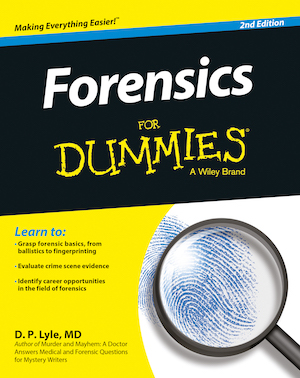For years now the concept of a “genetic chimera” has sparked the imagination of writers: from Stephen King to Michael Crichton, from CSI to The Office. The idea that an individual could harbor his/her own twin is creepy and intriguing at the same time, not to mention it offers the perfect escape from DNA testing in a police procedural plot.
But if you think that “chimeras have been done already,” think again. All fictional works written so far have exploited the concept of tetragametic chimeras, which results from combining two or more genetically distinct organisms. In humans, this happens when two fertilized eggs fuse together during the first hours of life in the womb.
Yet Mother Nature has invented many other forms of chimerism.
Some genetic defects/mutations can lead to individuals with genetically distinct cells in their body. Usually these defects involve anomalies in the number of chromosomes, but there are also asymptomatic cases, like for example animals whose coat is a patchwork of different colors, as in tortoiseshell cats. This type of chimerism is called mosaicism. Contrary to tetragametic chimeras, which originate from two or more individuals fused together, mosaics originate from a single individual. People whose eyes have different colors are also an example of genetic mosaicism.
Scientists claim that chimeras are much more common than we think. Chances are, you could be your own twin. But how surprised would you be if I told you that you are actually far more likely to be your mother’s chimera than your unborn sibling’s?
“Microchimerism refers to a small number of cells (or DNA) harbored by one individual that originated in a genetically different individual” (Gammill and Nelson, 2010).
An individual receiving a donor transplant or a blood transfusion is an example of microchimerism. Yet the most common form of microchimerism happens during pregnancy. There’s an ongoing two-way cell trafficking across the placenta, and these exchange cells can actually proliferate long term in the host’s body: fetal cells can be found in the mother years after she gave birth. In fact, because even spontaneous abortions cause fetal cells to be released into the mother’s body, women who became pregnant but never gave birth can also harbor this form of microchimerism.
Mystery writers are familiar with the “Jane Doe scenario”: an unidentified woman that lands on the medical examiner’s table. One of the many things the ME can learn about this woman with today’s technology is whether or not she was ever pregnant—even if the pregnancy ended with a spontaneous abortion. With a single test the ME can find male DNA in Jane Doe and deduce that at some point she was pregnant with a baby boy. A baby girl can also be detected, but it requires more than one test.
Just like fetal cells can be found in the mother years after she has given birth, the inverse is also true: maternal cells have been found in fetal liver, lung, heart, thymus, spleen, adrenal, kidney, pancreas, brain, and gonads. What’s surprising is that in either case (mother-to-fetus transfer, or, vice versa, fetus-to-mother transfer), the extraneous cells migrate to a certain tissue and, once there, they are able to differentiate and proliferate, acting at all effects as if they were engrafted. One paper found circulating maternal cells in 39% of the study subjects (Loubiere et al. 2006).
But even if you are not your own twin, even if you don’t harbor cells from your mother or your child, even then chimeras are closer than you think. Because we all originated from a chimera: roughly 10% of our DNA is made from viral genes, and how this came to happen is a fascinating story.
A long time ago a virus infected a sperm cell or oocyte of one of our ancestors. Once there, the genetic material from the virus fused with the genetic material of the cell —- that’s an old trick viruses play so they can replicate. Except this particular virus never replicated. The sperm or oocyte was fertilized and became a fetus, and that fetus now carried the bit of viral DNA. The viral genes were “stuck”, no longer able to replicate, and thus effectively silenced.
Finally, the last form of chimerism I would like to discuss is far less known because it belongs to a fairly new field: epigenetics.
Genes are packaged inside the nucleus, some deeply hidden inside, and some exposed so that they can be easily “translated” into proteins. This configuration can change in time, as genes can move from the inside of the nucleus and become exposed, while others previously exposed can become hidden. Life events, changes in the environment or in diet, stress, and traumas can potentially affect these mechanisms, causing some genes to turn on while turning off others.
Epigenetics is the study of all mechanisms that can affect gene silencing (turning the genes “off”) and gene expression (turning the genes “on”). In other words, it addresses the question: what causes some genes to shift from being hidden (silenced) to becoming suddenly exposed (expressed) and other genes instead to suddenly become hidden (silenced)?
The amazing thing is that these epigenetic mechanisms are not encoded in the DNA, yet there have been studies that have shown that epigenetic changes caused by stress or diet can indeed be carried over for the next two-three generations.
You’ve probably guessed it by now: an individual whose cells express distinct genes within the same tissue is called an epigenetic chimera.
From a writer’s point of view, this kind of chimerism lends itself to many more scenarios than the genetic one. For one thing, it is much more complicated to detect as the defects no longer lie in the genes themselves, but rather in which genes are expressed and which aren’t. At the same time, epigenetic disorders can give rise to any sort of dysfunctional phenotypes. And you have a wide range of “life events” that could potentially trigger the “sudden change” in your character(s): viruses can certainly mess up with the cells’ signaling and turn on forgotten genes; an accident or physical trauma can spike new sensations/symptoms (have you ever heard of someone’s sense of smell suddenly spiking after a car accident?); a change in diet/environment; etc.
Vampires and zombies may have been done already. But there’s still a lot of room for chimeras of all kinds.
E.E. Giorgi is a scientist, a writer and a photographer. She loves to blog about science for the curious mind, especially the kind that sparks fantastic premises and engaging stories. She has done scientific consultations for writers such as Autumn Kalquist (Legacy Code) and bestselling author Carol Cassella (Oxygen). E.E.’s detective thriller CHIMERAS, a hard-boiled police procedural with a genetic twist, is now available on Amazon.
Link to Blog: http://chimerasthebooks.blogspot.com/
Link to book on Amazon: http://www.amazon.com/dp/B00JI6UNPE
Previous Posts on Chimerism:
Q&A: How Could My Sleuth Recognize a Chimera?: https://writersforensicsblog.wordpress.com/2010/07/05/qa-how-could-my-sleuth-recognize-a-chimera/
Organ Creation and Harvesting: Reality Imitating Art: https://writersforensicsblog.wordpress.com/2013/07/18/organ-creation-and-harvesting-reality-imitating-art/
Guest Blogger: Elena Giorgi: Deep DNA Sequencing: https://writersforensicsblog.wordpress.com/2011/09/22/guest-blogger-elena-giorgi-deep-dna-sequencing/
Human Chimerism: Mindboggling DNA Tests Gone Wrong-Guest Blogger: https://writersforensicsblog.wordpress.com/2010/06/24/human-chimerism-mindboggling-dna-tests-gone-wrong-guest-blogger/




























Christine
August 14, 2014 at 3:59 pm
Do you think it’s possible for a person to be a “brain chimera”; where the extraneous cells migrate to the hypothalamus of the individual, creating a hybrid structure that affects the sex identity of the host? I’m building off the studies of artificial avian chimeras produced by switching the brain primordium between male and female identities before gonadal development. Like this one for example: http://www.ncbi.nlm.nih.gov/pubmed/12802009
LikeLike
D.P. Lyle, MD
August 14, 2014 at 6:13 pm
I don’t know if it’s possible but maybe.
LikeLike
Ciara Darren
August 8, 2016 at 12:27 pm
Gives a different perspective to the old saying, “The sins of the father down to the third and the fourth generation.” Thank you for bring this unique concept up
.
LikeLike